Thermal Energy Teaching Resources
Teaching about thermal energy just got easier! Download printable worksheets, hands-on activities and Google Slide templates — created by teachers for science teachers and their lesson plans!
This collection of NGSS curriculum-aligned resources includes editable options and resources that our teacher team has already differentiated for you to make teaching about this type of energy a whole lot easier. Explore heat and how it is transferred, and dive into the meaning of temperature!
Each resource has undergone rigorous review by a Teach Starter teacher team member to ensure it's ready for use in your classroom.
Whether it's your first year covering thermal energy in the classroom or you're just looking for some new ideas, we have you covered! Read on for a primer from our teacher team, including a thermal energy definition and some examples you can use with your students.
What Is Thermal Energy? A Kid-Friendly Definition
So what exactly is thermal energy, and how do you explain it to kids? Here's a definition you can add to your lesson plans!
Thermal energy is the internal energy of a substance. This energy comes from the way the atoms and molecules in the substance or object move and interact with one another.
When molecules move faster, they have more thermal energy. When they move slower, they have less.
Thermal Energy and Temperature
Thermal energy is directly related to the temperature of an object or substance.
- When the temperature increases, so does its thermal energy!
- When the temperature decreases, the thermal energy decreases too.
What Are Kinetic Energy and Potential Energy? Kid-Friendly Definitions
Thermal energy is made up of a mix of the total kinetic energy of the molecules in a particular substance plus their potential energy.
With that in mind, we've got a simple kinetic energy definition and a definition of potential energy that you can use as well.
Kinetic Energy
Kinetic energy is the energy an object possesses due to its motion. In the case of thermal energy, it's the motion of the molecules that provides the kinetc energy component of thermal energy.
- The formula for kinetic energy is KE = 1/2 * mass * velocity^2.
Potential Energy
Potential energy is the energy stored in an object due to its position or condition. When potential energy is released, it can be transformed into thermal energy.
Thermal Energy vs. Heat Energy — What's the Difference?
We can't talk about thermal energy in science class without talking about heat.
Heat is something that makes things warm or hot, and heat can cause changes in thermal energy.
So are thermal energy and heat energy the same thing? Not quite!
- Heat energy specifically refers to the transfer of energy from a region of higher temperature to a region of lower temperature.
- Thermal energy, on the other hand, represents the overall energy content of a system.
How Is Thermal Energy Transferred?
If you've ever touched a dish that is still warm from the oven with your bare hand, you've experienced how thermal energy can transfer from one object to another.
There are three main ways that this can occur:
Conduction Heat Transfer
Conduction heat transfer is a transfer of heat from an area of higher temperature to an area of lower temperature — essentially from a warmer end to a cooler end.
When you touch a hot pan out of the oven, heat is conducted from the dish to your hand. If you place a piece of ice in your hand, it will start to melt as heat from the body transfers to the ice.
Convection Heat Transfer
Convection is another method of heat transfer, but this type occurs through the movement of liquids or gases. Convection happens when warmer, less dense substances rise, and cooler, denser substances sink.
A good example of convection that can be demonstrated right in the classroom with the help of a Bunsen burner is boiling water.
When a pot of water boils, the hotter water rises. Meanwhile, the cooler water sinks. This creates a convection current.
Radiation Heat Transfer
The final method of heat transfer is called radiation. This term refers to the transfer of energy through electromagnetic waves.
For example, if you place your hand near a burning candle, you may feel the heat through radiation. We also feel the heat of the sun through radiation.
- Plus Plan
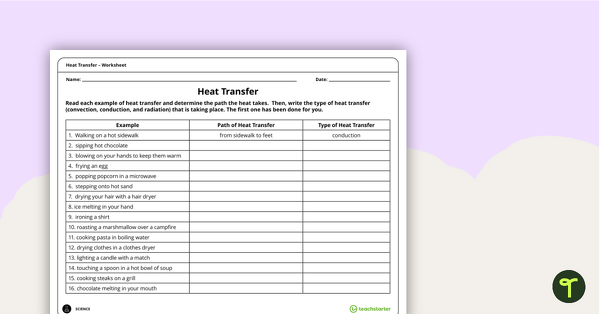
Heat Transfer Worksheet
A worksheet to practice identifying the methods of heat transfer.
- Plus Plan
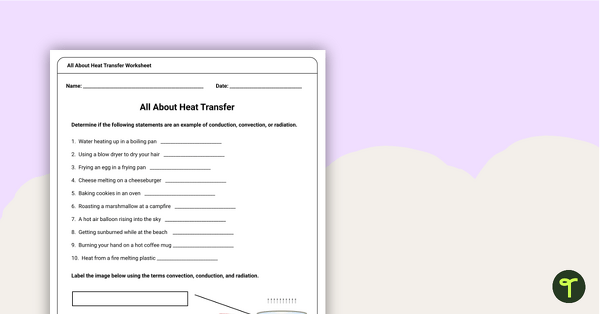
All About Heat Transfer
Challenge your students to show what they know about conduction, convection, and radiation by identifying examples of each.
- Plus Plan
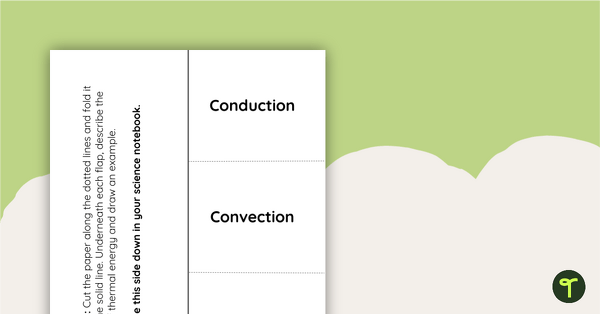
Thermal Energy Transfer Foldable
A foldable to use when learning about the three types of thermal energy transfer.
- Plus Plan

Heat Transfer: Radiation Guided Notes
A set of guided notes to use when teaching about radiation.
- Plus Plan
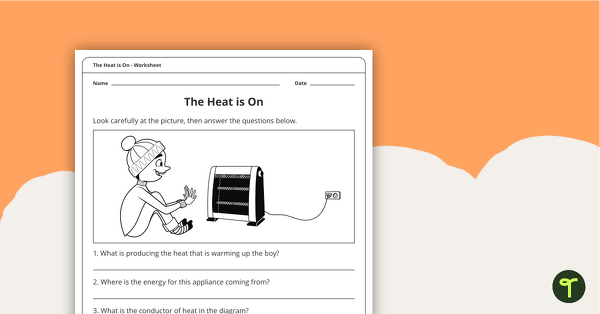
The Heat is On Worksheet
A worksheet that covers the topic of heat energy.
- Plus Plan
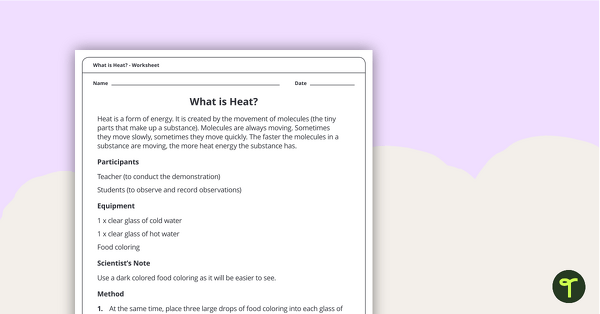
What is Heat? Worksheet
A worksheet to help students understand heat energy.
- Plus Plan

Heat Transference Worksheet
A worksheet to help students identify examples of heat transference.
- Plus Plan
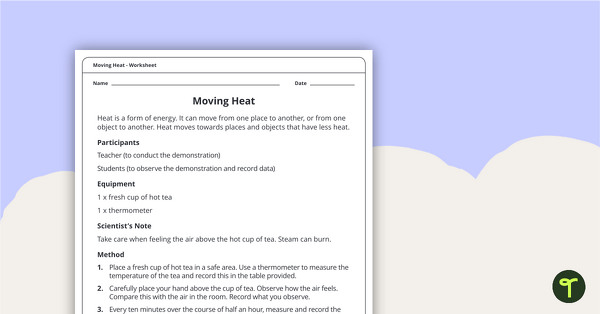
Moving Heat Worksheet
A worksheet to help students understand how heat moves.
- Plus Plan
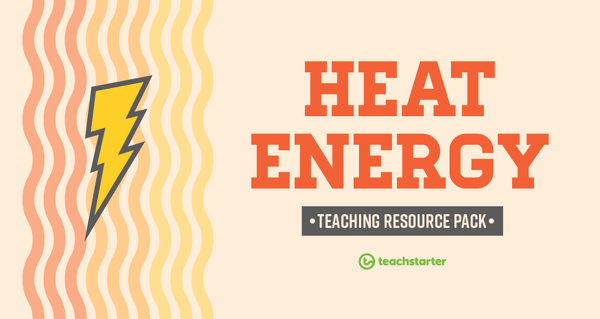
Heat Energy Teaching Resource Pack
A comprehensive set of posters, activities and worksheets related to the concept of heat energy.
- Plus Plan

The Heat is On Unit Plan
This science unit addresses the concept of heat energy, including heat sources, heat transfer, thermal conductors, and thermal insulators.
- Plus Plan
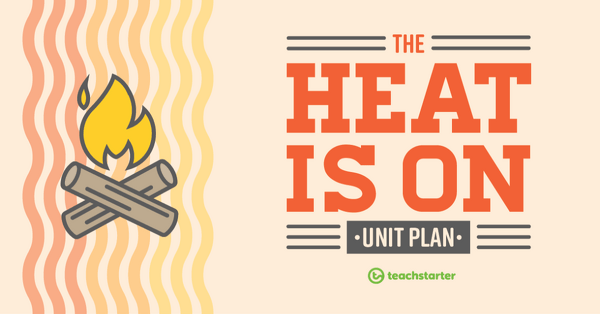
Sources of Heat
A 60 minute lesson in which students will identify kinetic, electrical and chemical sources of heat energy.
- Plus Plan
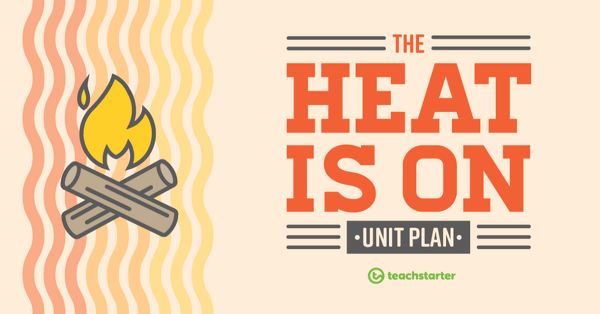
The Heat is On
An assessment task in which students will demonstrate knowledge and understanding of heat energy and how it moves.
- Plus Plan
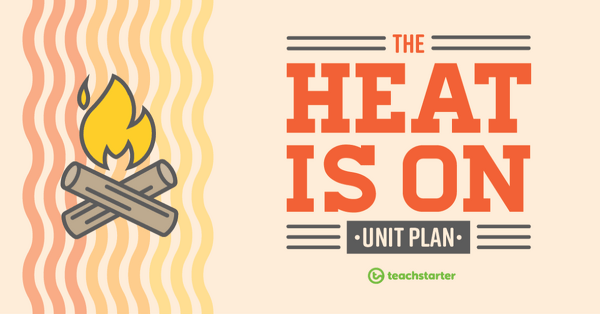
Thermal Insulators - Keeping Out the Heat
A 60 minute lesson in which students will investigate which materials are the best thermal insulators.
- Plus Plan
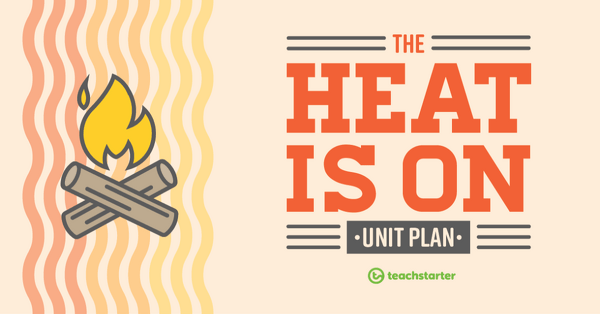
Thermal Conductors - Feel the Heat
A 60 minute lesson in which students will investigate which materials are the best thermal conductors.
- Plus Plan
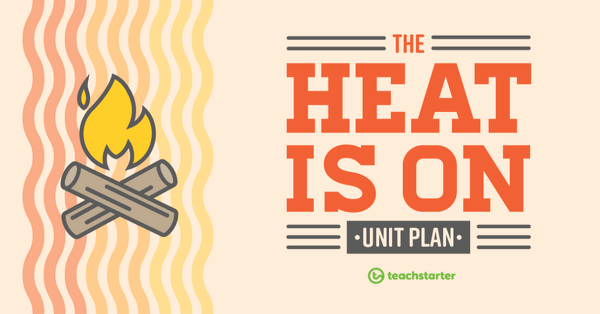
What is Heat?
A 60 minute lesson in which students will explore the concept of heat as a form of energy.